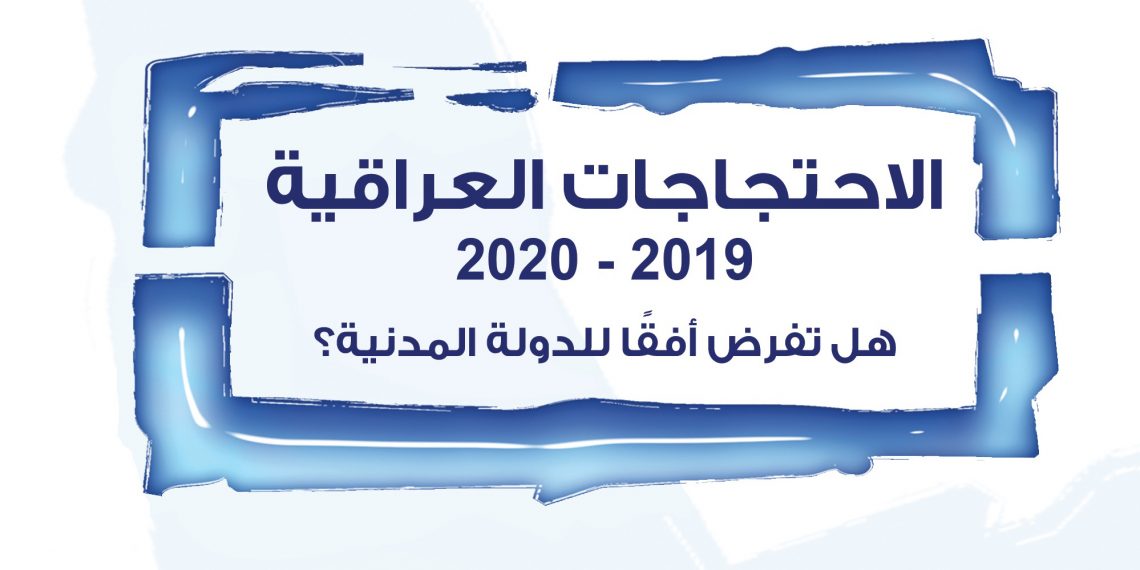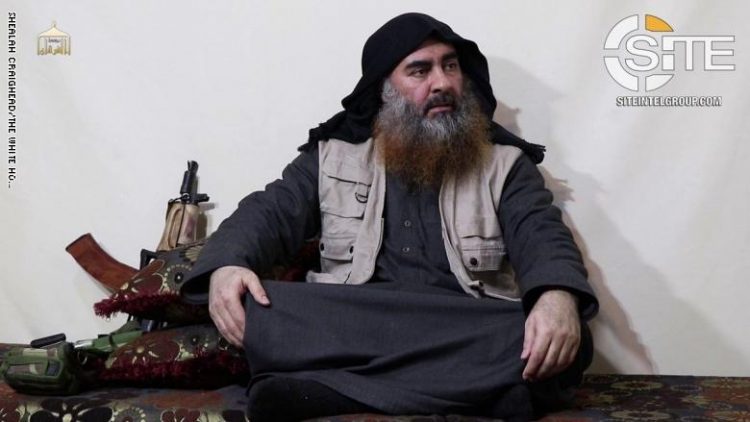In its 160th book, “Iraqi protests 2019-2020: Does it impose a horizon for a civil state?” (April 2020), the Al-Mesbar Studies and Research Center explores the political and social motives that shaped the political landscape in Iraq, culminating in the protest movement of 2019. It poses difficult questions about the future of the state, the prevarication of Islamist political parties, and Iranian influence in the country.
The essays contained within “Iraqi Protests” detail radical shifts in the political consciousness of the younger generation of Iraqis. Analysts have noted growing discontent among young people with the ascendancy of the Islamist political parties, a frustration no less pointed than their economic grievences and calls for social change. Additionally, they have noted a rising tide of women joining, and organizing, street protests.
Iraqi researchers and academics participated extensively in the book, addressing issues arising from the protest movement as well as its domestic and international repercussions. Some essays focus on the general historical trajectory of protests in Iraq, beginning with the monarchy and continuing through the 2011 demonstrations, which failed to erase the sectarian taint which marred successive post-2003 Iraqi governments by power. The analysis extends through the October 2019 protests, explaining the significance of the multiple components involved and detailing new youth aspirations through a close reading of popular protest slogans. The authors alo examine the positions of Islamist parties affiliated with Iran, which sought to circumvent protester demands calling for the “lifting the Iranian hand” from Iraq.
“Escalation” against Iranian influence has been a key pillar of the protests, which was rooted in the growing rejection by Iraqi youth of foreign interference generally with Iraqi sovereignty. The clamor against Tehran’s tutlege has reached an unprecedented level, to the extent that Khomeini was widely burned in effigy. Interestingly, it has also resulted in increased resentment against Turkish interference. In a parallel development, alienation from Islamist parties, Shiite and Sunni has risen, a trend accelerated by the traumatic experiences associated with ISIS, also known as Daesh.
In many respects, the question of a civil state formed the nerve center and driving spirit behind the protests. They saw in it the basis of building a state of shared citizenship, equality of rights and duties, in pointed contrast to the sectarian system of quotas that has marred Iraqi institutions and is often manipulated by local players and political agents linked to foreign agendas. This perception is based on a chronic conflict between the state and non-state actors, one which has led to the failure and weakness of official institutions. The state’s inability to impose its authority and enforce the law in a challenging security environment has led to the rise of alternative sources of legitimacy that exist parallel to, and compete with, the state. This development, which occurred with the tacit consent of many parties, was shrouded in silence, joining many other aspects of political life traditionally left to discretion. That is, until the protests of 2019 erupted, and the youth rejected this silent collusion by openly repudiating sectarianism and calling for renewed national unity, seeking to change the rules of the political game.
The book included two studies that seek to demonstrate the political and national risks resulting from a crisis in the democratic process and the sectarian quotas which govern behavior among different Iraqi ruling groups. One argues that “the [sectarian] monopolists did not win total control over the country, after a new culture led by a generation of young people, based on participation in creating an environment capable of reforming the political system. This succeeded, in a short period of time, in establishing a public square that is politically influential. Prime Minister Dr. Adel Abdul Mahdi was forced to resign, and to rescind an electoral law, a new electoral commission, in addition taking other fundamental reforms, which promise to be influential in the political system.”
Iraqi protests have catalyzed several international and regional responses, four of which were covered in the book: the American, Iranian, Arab, and global. These positions, some analyses suggest, have been markedly divergent, governed by the political and economic relations between each State and its neighbors. Each State has taken its position on an equation based in large measure on the complex interdependence of domestic constituencies, rather than strictly foreign policy considerations. Nevertheless a broad consensus among Arab supported the restoration of Iraqi independence from foreign influence.
The book sought to answer a set of questions: How can the Iraqi people’s attitude towards Iranian interference be interpreted without regard to ideological alignments? What are the general criteria for this interpretation? Will the Iraqi protests herald the beginning of the end for Iran’s role and influence?
The American-Iranian conflict in Iraq has had an impact on the protest landscape, as each state took starkly different positions. As one study notes, Washington tried not to intervene directly in support of the demonstrations, perhaps motivated by a desire to avoid charges that it has lost clout relative to Iran, which showed few compuctions about openly attacking the demonstrators. Indeed, Tehran has adopted an anti-protest stance, viewing the demonstrations as conspiracy and an hired proxy force funded by international and regional powers seeking to weaken the Iranian axis and its allies.
Further afield, the book addresses with interest the prominent and remarkable roles of Iraqi women in the 2019 protests. Studies estimate that this presence in political protest activity is not new or surprising, but rather due to the participation of women in the Iraqi revolution of 1920.
Social media platforms have been instrumental in understanding the new role, seeking to update the media coverage that has helped to fuel the protest. Two studies have discussed how these platforms are employed by young activists as a nucleus of change, powered by virtual spaces.
The book studied the impact of the Covid-19 pandemic on Iraqi protests and reported on the impact of the new virus on democracy in the world.
In conclusion, the Center thanks all the researchers involved in the book, in particular Rasheed Al-Khayoun, who supervised the edition, and fellow colleague Samira Ibrahim, who coordinated it, as well as fellow colleague Ibrahim Amin Nimer, who helped to organize it.
Editorial Board
April 2020










